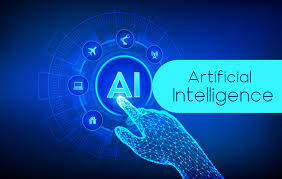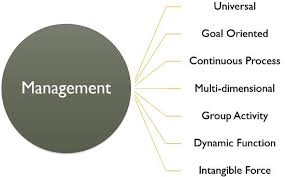Unlocking Success: Elevating Your Business with Exceptional Services
The Importance of Quality Services in Today’s Business World
In today’s highly competitive business environment, providing quality services to customers has become more crucial than ever. Businesses that prioritize delivering exceptional services not only attract and retain loyal customers but also gain a competitive edge in the market.
Building Customer Trust and Loyalty
One of the key benefits of offering top-notch services is building trust and loyalty with customers. When customers receive reliable, efficient, and personalized services, they are more likely to develop a strong bond with the business. This trust leads to repeat business, positive word-of-mouth referrals, and long-term customer relationships.
Enhancing Customer Satisfaction
Quality services are directly linked to customer satisfaction. When businesses go above and beyond to meet customer needs and expectations, it results in satisfied customers who are more likely to return for future purchases. Happy customers are also more inclined to leave positive reviews and recommendations, further enhancing the business’s reputation.
Competitive Advantage
In a crowded marketplace, businesses that distinguish themselves through superior services gain a significant competitive advantage. Customers are willing to pay a premium for exceptional service experiences, giving businesses an opportunity to differentiate themselves from competitors and stand out in the market.
Driving Business Growth
Quality services play a vital role in driving business growth. Satisfied customers not only become repeat buyers but also act as brand ambassadors who promote the business to others. By consistently delivering high-quality services, businesses can expand their customer base, increase revenue, and achieve sustainable growth over time.
Continuous Improvement
To maintain high standards of service quality, businesses must be committed to continuous improvement. This involves gathering feedback from customers, analyzing performance metrics, and identifying areas for enhancement. By investing in employee training, adopting new technologies, and refining processes, businesses can ensure that their services remain top-notch in a rapidly evolving market.
Conclusion
In conclusion, quality services are essential for success in today’s business landscape. By prioritizing customer satisfaction, building trust and loyalty, gaining a competitive advantage, driving growth, and embracing continuous improvement, businesses can create lasting value for both their customers and themselves.
9 Essential Tips for Delivering Exceptional Services
- Provide excellent customer service.
- Be responsive to customer inquiries and feedback.
- Offer a variety of services to meet different needs.
- Ensure your services are easy to access and use.
- Communicate clearly about the services you offer.
- Train your staff to deliver high-quality services.
- Regularly evaluate and improve your services based on feedback.
- Be transparent about pricing and any potential limitations of your services.
- Build trust with customers by consistently delivering on your promises.
Provide excellent customer service.
Providing excellent customer service is paramount in establishing a strong rapport with clients. By offering attentive, personalized assistance and addressing customer needs promptly and effectively, businesses can enhance customer satisfaction and loyalty. Excellent customer service not only fosters positive relationships with clients but also sets businesses apart from competitors, ultimately leading to increased customer retention and advocacy. Prioritizing exceptional customer service demonstrates a commitment to meeting and exceeding customer expectations, laying a solid foundation for long-term success in any industry.
Be responsive to customer inquiries and feedback.
Being responsive to customer inquiries and feedback is a critical aspect of providing excellent services. By promptly addressing customer questions, concerns, and suggestions, businesses demonstrate their commitment to customer satisfaction and show that they value their customers’ opinions. This responsiveness not only helps build trust and loyalty but also allows businesses to identify areas for improvement and make necessary adjustments to enhance the overall service experience. Prioritizing timely and attentive responses to customer inquiries can lead to increased customer satisfaction, positive word-of-mouth referrals, and long-term success in today’s competitive business landscape.
Offer a variety of services to meet different needs.
To effectively cater to a diverse range of customer needs, businesses should consider offering a variety of services. By providing a comprehensive selection of services, businesses can ensure that they meet the unique requirements and preferences of different customers. This approach not only enhances customer satisfaction but also demonstrates flexibility and adaptability, enabling businesses to attract a broader audience and establish themselves as versatile service providers in the market.
Ensure your services are easy to access and use.
To maximize the effectiveness of your services, it is crucial to ensure that they are easily accessible and user-friendly. By streamlining the process for customers to access and utilize your services, you can enhance their overall experience and satisfaction. Simplifying navigation, providing clear instructions, and offering intuitive interfaces can make a significant difference in how customers perceive and interact with your services. Remember, convenience is key in today’s fast-paced world, so prioritizing accessibility and ease of use can set your business apart and foster long-term customer relationships.
Communicate clearly about the services you offer.
Clear communication about the services you offer is crucial for ensuring that customers understand the value and benefits they can expect. By providing detailed and transparent information about your services, you can set clear expectations, address any potential questions or concerns, and ultimately build trust with your customers. Clear communication also helps to showcase your expertise and professionalism, making it easier for customers to make informed decisions about engaging with your business.
Train your staff to deliver high-quality services.
Training your staff to deliver high-quality services is a crucial investment in the success of your business. By providing comprehensive training programs, you empower your employees with the knowledge, skills, and tools they need to exceed customer expectations. Well-trained staff members not only enhance the overall customer experience but also contribute to building a positive reputation for your business. Consistent training ensures that your team stays updated on industry best practices and remains aligned with your service standards, ultimately leading to increased customer satisfaction and loyalty.
Regularly evaluate and improve your services based on feedback.
Regularly evaluating and improving your services based on feedback is a crucial practice for any business looking to thrive in a competitive market. By actively seeking input from customers and analyzing their feedback, you can gain valuable insights into areas where your services excel and where there is room for enhancement. This proactive approach not only demonstrates your commitment to meeting customer needs but also allows you to adapt and evolve in response to changing preferences and expectations. Continuous improvement based on feedback ensures that your services remain relevant, effective, and aligned with customer satisfaction, ultimately leading to long-term success and growth for your business.
Be transparent about pricing and any potential limitations of your services.
It is crucial for businesses to be transparent about pricing and any potential limitations of their services. By clearly communicating pricing structures and outlining any constraints or restrictions, businesses establish trust with customers and avoid misunderstandings. Transparency fosters a sense of honesty and integrity, demonstrating a commitment to providing reliable and upfront information to clients. This approach not only helps manage customer expectations but also contributes to building long-lasting relationships based on mutual respect and clarity.
Build trust with customers by consistently delivering on your promises.
Building trust with customers is paramount in establishing long-lasting relationships and loyalty. One effective way to achieve this is by consistently delivering on your promises. When businesses uphold their commitments and consistently meet or exceed customer expectations, it fosters a sense of reliability and dependability. By demonstrating integrity and reliability in service delivery, businesses can instill confidence in their customers, ultimately strengthening trust and solidifying their reputation as a trustworthy partner.












